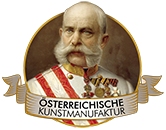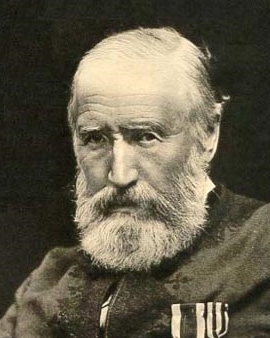Art can change history by confronting the public with reality. One example is the work of William Simpson. Together with the Times correspondent William Howard Russel and Thomas Chenery, William Simpson's lithographs from the Crimean War (1853- 56) contributed to a re-evaluation of the modern war in the European public. As allies of the decaying Ottoman Empire, the British Empire and France tried to stop Russia's continental expansion and became embroiled in one of the bloodiest colonial wars of the 19th century. Since the victory over Napoleon, British troops were no longer involved in such a war and considerable weaknesses were evident in the organisation of supplies and the provision of troops with the help of modern logistical instruments. During the first battles the British expeditionary corps won victories against the tsarist army, but proved unable to treat the wounded in the material battles adequately. Many soldiers died during the transport to the central military hospital, sometimes lasting weeks.
William Simpson accompanied and documented the failure and mismanagement of the British military leadership and caused a turn in public opinion with the comments of the Times journalists. But Simpson's career was anything but predetermined. Born in Glasgow, he did not start school until the age of 11. With discipline and a sense of mission, he continued to work through evening studies and became an apprentice in a lithography company. The rise of this art form was closely linked to the development of the mass media. Newspapers, magazines and journals demanded images to illustrate the written word. In 1854 Simpson was commissioned to make lithographs of the Crimean War according to reports. He convinced his clients that only local reporting would have a mass impact. When he arrived in Crimea, he was overwhelmed by the scenes and the suffering of the ordinary soldiers, who were victims of violence, but above all of the failure and incompetence of their own commanders. The face of the war and the violence had not changed, but what made the difference were the technical possibilities of telegraphy and the mass press, which allowed the public to have a new experience of the war. The images of wounded left alone, of emergency transports, dirt, illness and death, complemented the reports of people like Florence Nightingale, who became an icon of humanity in the Crimean War.
With the reputation he earned as an illustrator of the Crimean War, Simpson received commissions from magazines to report on similar events and to create a portfolio after his return. The next target was again a colonial conflict in the British Empire. In India, British colonial troops crushed the so-called Sepoy uprising with the most brutal force. In 1868 he was part of the Ethiopia expedition, a punitive mission against African tribal chiefs who had killed English missionaries. After further work as a war correspondent in the Franco-Prussian War of 1866 and the second Afghan War, Simpson retired from public life.
×





.jpg)
.jpg)
.jpg)
.jpg)
.jpg)
.jpg)
.jpg)
.jpg)
.jpg)
.jpg)
.jpg)
.jpg)
 - (MeisterDrucke-164169).jpg)
 - (MeisterDrucke-164169).jpg)
.jpg)
.jpg)
.jpg)
.jpg)
.jpg)
.jpg)
.jpg)
.jpg)
.jpg)
.jpg)
.jpg)
.jpg)
.jpg)
.jpg)
 - (MeisterDrucke-177022).jpg)
 - (MeisterDrucke-177022).jpg)
.jpg)
.jpg)
.jpg)
.jpg)
.jpg)
.jpg)
.jpg)
.jpg)
.jpg)
.jpg)
.jpg)
.jpg)
.jpg)
.jpg)
.jpg)
.jpg)
_on_the_ward_from_-_(MeisterDrucke-361784).jpg)
_on_the_ward_from_-_(MeisterDrucke-361784).jpg)
 - (MeisterDrucke-43591).jpg)
 - (MeisterDrucke-43591).jpg)
.jpg)
.jpg)
.jpg)
.jpg)
.jpg)
.jpg)
.jpg)
.jpg)
.jpg)
.jpg)
.jpg)
.jpg)
.jpg)
.jpg)
.jpg)
.jpg)
.jpg)
.jpg)
.jpg)
.jpg)
.jpg)
.jpg)
.jpg)
.jpg)
.jpg)
.jpg)
.jpg)
.jpg)
.jpg)
.jpg)
_-_(MeisterDrucke-219667).jpg)
_-_(MeisterDrucke-219667).jpg)
.jpg)
.jpg)
.jpg)
.jpg)
 - (MeisterDrucke-260711).jpg)
 - (MeisterDrucke-260711).jpg)
.jpg)
.jpg)
.jpg)
.jpg)
.jpg)
.jpg)
.jpg)
.jpg)
.jpg)
.jpg)
.jpg)
.jpg)
.jpg)
.jpg)
.jpg)
.jpg)
.jpg)
.jpg)
.jpg)
.jpg)
.jpg)
.jpg)
.jpg)
.jpg)
_-_(MeisterDrucke-275228).jpg)
_-_(MeisterDrucke-275228).jpg)
.jpg)
.jpg)
.jpg)
.jpg)
.jpg)
.jpg)
.jpg)
.jpg)
.jpg)
.jpg)
.jpg)
.jpg)
.jpg)
.jpg)
.jpg)
.jpg)
.jpg)
.jpg)
_-_(MeisterDrucke-316984).jpg)
_-_(MeisterDrucke-316984).jpg)
.jpg)
.jpg)
.jpg)
.jpg)
.jpg)
.jpg)
.jpg)
.jpg)
.jpg)
.jpg)
.jpg)
.jpg)
.jpg)
.jpg)
.jpg)
.jpg)
.jpg)
.jpg)
.jpg)
.jpg)
.jpg)
.jpg)
.jpg)
.jpg)
.jpg)
.jpg)
.jpg)
.jpg)
.jpg)
.jpg)
.jpg)
.jpg)
.jpg)
.jpg)
_-_(MeisterDrucke-310561).jpg)
_-_(MeisterDrucke-310561).jpg)
.jpg)
.jpg)
.jpg)
.jpg)
.jpg)
.jpg)
 - (MeisterDrucke-232035).jpg)
 - (MeisterDrucke-232035).jpg)
.jpg)
.jpg)
_-_(MeisterDrucke-159844).jpg)
_-_(MeisterDrucke-159844).jpg)
.jpg)
.jpg)
_plate_from_The_Seat_of_War_in_the_East_published_-_(MeisterDrucke-309227).jpg)
_plate_from_The_Seat_of_War_in_the_East_published_-_(MeisterDrucke-309227).jpg)
.jpg)
.jpg)
 - (MeisterDrucke-165134).jpg)
 - (MeisterDrucke-165134).jpg)
.jpg)
.jpg)
.jpg)
.jpg)
.jpg)
.jpg)
.jpg)
.jpg)






